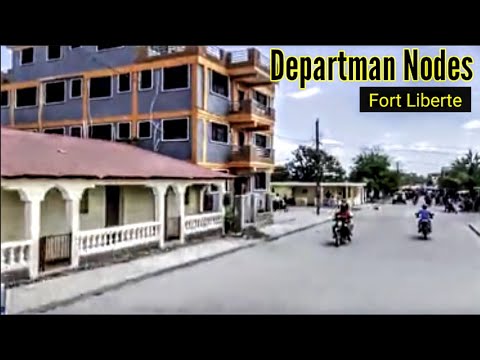
Nestled in the northeastern corner of Haiti, Fort Liberté stands as a testament to the nation’s rich and tumultuous history. Often overshadowed by more famous sites, this fort is a hidden gem that offers insight into Haiti’s colonial past and its struggle for independence. Known locally as “Vil” or “Ville,” meaning town, Fort Liberté is not only an important historical site but also a vibrant community with deep cultural roots.
#### Historical Background
Fort Liberté was originally built in the early 19th century during the colonial times when Haiti was under French control. Originally named “Fort Dauphin” under the French, it was later renamed to symbolize freedom after Haiti gained its independence in 1804, becoming the world’s first black-led republic and the first independent Caribbean state.
The fort played a significant role in defending the newly independent nation against potential re-colonization attempts. Its strategic location near the Bay of Fort Liberté made it an ideal point for defense and trade, contributing significantly to the economic development of the region.
#### Architectural Significance
The architecture of Fort Liberté is a blend of French colonial military design adapted to local conditions. The fort’s structure includes thick walls built from coral stone, designed to withstand both attacks and harsh weather conditions. Its layout was strategically planned to provide optimal defense against invaders, with cannons still perched on its ramparts overlooking the bay.
Today, visitors can explore various parts of this historic fortification, including bastions, dungeons, and watchtowers that offer panoramic views of the surrounding landscape. Despite some effects of time and weathering, much of its original structure remains intact, providing a fascinating glimpse into 19th-century military architecture.
#### Cultural Significance
Aside from its historical and architectural value, Fort Liberté is deeply woven into the cultural fabric of Haiti. It serves as a symbol of resistance and resilience for Haitians, echoing stories of freedom fighters who stood against colonial forces. Every year, numerous cultural events are held at or near the fort that celebrate Haitian culture—its dance, music, art—and commemorate pivotal moments in Haiti’s history.
In addition to these celebrations, Fort Liberté operates as a nucleus for local community life where residents engage in daily activities amidst this historic backdrop. Markets brimming with local produce and crafts line streets juxtaposed against historical monuments—a reminder of how past legacies blend into present life.
#### Challenges and Conservation Efforts
Like many historical sites around the world, Fort Liberté faces challenges related to preservation due to natural decay over time exacerbated by occasional severe weather conditions common in Caribbean regions like hurricanes. Furthermore, economic constraints can make conservation efforts difficult; however there has been growing awareness about preserving this important historical site.
Local authorities along with international agencies have been working together toward maintaining and restoring parts of Fort Liberte so that future generations can also learn from and enjoy this remarkable site. Educational programs aimed at instilling pride and protective sentiment among locals towards their heritage are increasingly being implemented.
#### Conclusion
Fort Liberté is more than just stones; it embodies centuries-old tales waiting to be told—tales replete with heroism which shaped not only Haiti but influenced battles for freedom across Latin America and beyond. As efforts continue towards its preservation so too does hope persist that this venerable fortress will stand resiliently as both monumentality to human spirit’s indomitable will towards liberty.
